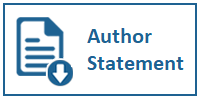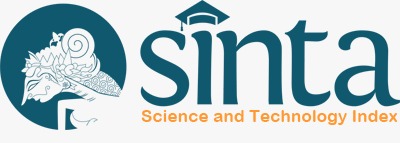An Adaptive Stacking An Adaptive Stacking Approach for Monthly Rainfall Prediction with Hybrid Feature Selection
Hybrid Feature Selection
DOI:
https://doi.org/10.31937/sk.v17i1.4157Abstract
Rainfall is a critical climatic element for water resource management, agriculture, and hydrometeorological disaster mitigation. However, its nonlinear and fluctuating characteristics require a careful and adaptive predictive approach. This study aims to develop a monthly rainfall prediction model using an Adaptive Stacking Ensemble method combined with a hybrid feature selection framework. The feature selection integrates three techniques”correlation analysis, feature importance from Random Forest, and Recursive Feature Elimination (RFE)”through a voting mechanism. Three machine learning algorithms, namely Random Forest, K-Nearest Neighbors (KNN), and XGBoost, are used as base learners. The meta-learner is adaptively selected based on the best-performing base model. Model performance is evaluated using R², RMSE, and MAE metrics. The proposed method is expected to produce a more accurate, stable, and reliable predictive model to support climate-based decision-making.
By leveraging the hybrid feature selection framework, the model effectively identifies the most relevant weather variables related to monthly rainfall patterns, thereby reducing model complexity without sacrificing accuracy. The adaptive stacking approach also offers flexibility in capturing nonlinear relationships between features and targets, while enhancing model generalization across seasonally varying data. Experiments were conducted on long-term weather datasets, and the results demonstrate that the proposed model outperforms single models and conventional ensemble methods. This research contributes to the development of more robust, data-driven climate prediction systems that can be applied across sectors affected by rainfall variability.
Downloads
Downloads
Published
How to Cite
Issue
Section
License
Copyright (c) 2025 Ahmad Zulfa

This work is licensed under a Creative Commons Attribution-ShareAlike 4.0 International License.
Authors retain copyright and grant the journal right of first publication with the work simultaneously licensed under a Creative Commons Attribution-ShareAlike International License (CC-BY-SA 4.0) that allows others to share the work with an acknowledgment of the work's authorship and initial publication in this journal.
Authors are able to enter into separate, additional contractual arrangements for the non-exclusive distribution of the journal's published version of the work (e.g., post it to an institutional repository or publish it in a book), with an acknowledgment of its initial publication in this journal.
Copyright without Restrictions
The journal allows the author(s) to hold the copyright without restrictions and will retain publishing rights without restrictions.
The submitted papers are assumed to contain no proprietary material unprotected by patent or patent application; responsibility for technical content and for protection of proprietary material rests solely with the author(s) and their organizations and is not the responsibility of the ULTIMA Computing or its Editorial Staff. The main (first/corresponding) author is responsible for ensuring that the article has been seen and approved by all the other authors. It is the responsibility of the author to obtain all necessary copyright release permissions for the use of any copyrighted materials in the manuscript prior to the submission.















